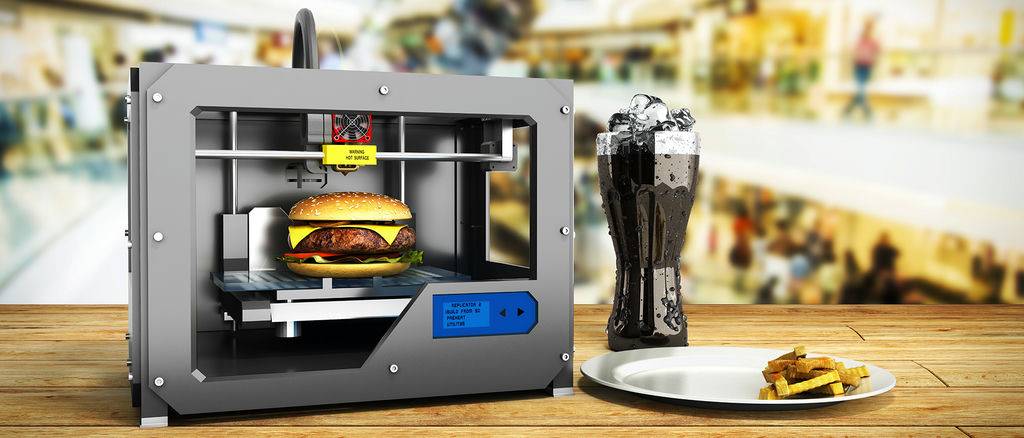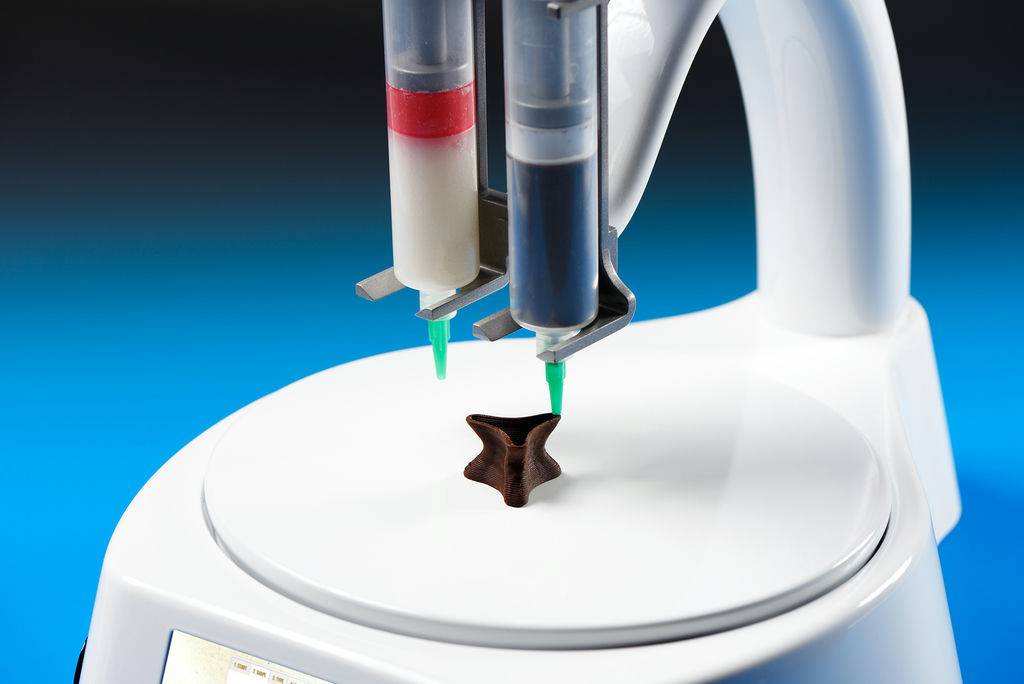Advances in food printers provide opportunity for flavor, texture and nutritional content customization.
3D printing today goes beyond layering food into shapes. The Digital Food Processing Initiative (DFPI) based in the Netherlands is testing new food printing technology, which can be adjusted for flavor, texture and nutritional content. The collaboration is an ongoing project between the Dutch institution specialized in agri-food Wageningen University & Research (WUR) and the high-tech hub in Eindhoven – TNO and Eindhoven University of Technology, whose aim is to bring commercially viable personalized food products to the market.
One of the biggest challenges to manufacturers who wish to target niche markets comes with operating at low-scale. This can result in high margins with low volumes, notes the DFPI. Large-scale food production already struggles to comply with all of these ever-changing wishes, so how can it make the next leap: produce food products tailored to fully meet the needs of individual consumers?
The mechanics of 3D food printing
3D Food Printing (3DFP) begins with the design of an object, including its dimensions. This design is subsequently sliced into layers by another piece of software. The coordinates of each individual layer are sent to the printer, which in turn, deposits or consolidates material in the locations described by the coordinates. After each layer is done, the subsequent layer is deposited and consolidated on top of the previous one until the 3D object has been completed. Unlike other fabrication technologies, the process does not use molds and does not involve the removal of material to create the shape.
Printing food in 3D enables the creation of a wide range of food products through many of the layer-by-layer deposition technologies used for “regular” 3D printing. Whereas some technologies use fully mixed formulations such as doughs that can be deposited by means of extrusion printing, other technologies use more basic ingredients such as sugar, flour, oil, or other powders and liquids that are combined within printing processes, such as powder bed printing or selective laser sintering.
3DFP can be used to produce food products with unique functionalities related to shape, taste, texture and overall composition. Examples of shape-related commercial 3D printed food products include printed pasta shapes with unique designs as offered by Italian food giant Barilla through its spinoff business BluRhapsody. German candy manufacturer Katjes has also entered into the space with 3D printed candy selfies brought to market by its spinoff, Magic Candy Factory.
Besides their focus on shape, these examples have something else in common. They exploit 3DFP for one of its main strengths: its capacity to function as a local, flexible production technology. Each 3D printer can be considered as a mini-production plant that has the capability of creating a range of different products and even fully personalized ones. 3DFP can also be used to create fully personalized food products with respect to composition and caloric content, texture and flavor as well, making the technology suitable for personalized food products.
Personalized food in action
Printed food products could fulfill most or even all requirements of the individual consumer in terms of properties like flavor, texture and color, portion size, type of ingredients, but also its entire composition in terms of macro- and micro-nutrients, calories, digestibility, among other factors.

A possible scenario for a vending machine-type of 3D food printer could be in a gym, capable of printing fully personalized nutrition bars. In this example, data could be obtained from the consumer during exercise as well as throughout the day to be combined with personal preferences to compose the optimal personalized nutrition bar. The bar would be created and sold on-site through vending machine printers.
In mass-produced food products, the manufacturing processes are scaled for efficiency and costs. Likewise, ingredient composition is highly specified to enable the efficient production of foods that meet quality standards, as well as specific food product properties. Exactly for this reason, reformulating food products to reduce their sugar content, for example, or vary between protein sources is quite complicated.
In order to bring a wide range of personalized food products to the market, certain technological developments need to be made. Note that there is no such thing as “the” 3D food printer. Different food products will require different ingredients, not only with respect to their type (proteins, carbohydrates, fats, vitamins, minerals,) but also with respect to the amount needed (grams, milligrams, micrograms) and form (powders, pastes, liquids). Hence, different food products may require different printing and, linked to that, dosing or mixing technologies.
In addition, the location and context of the printer, whether for home, supermarket or elsewhere, will require a different printing volume and speed, and hence different types of printers. Being able to use personalized nutrition advice obtained from various sources, such as smart devices, apps or medical professionals, in combination with personal preferences from the individual consumer, and turning that into a tasty personalized food product by means of a printer requires specific software development. From the ingredient perspective, it is important to obtain more knowledge on the types of ingredients and formulations that can be used in the various printing processes and on how to control and predict the properties of the final products.



